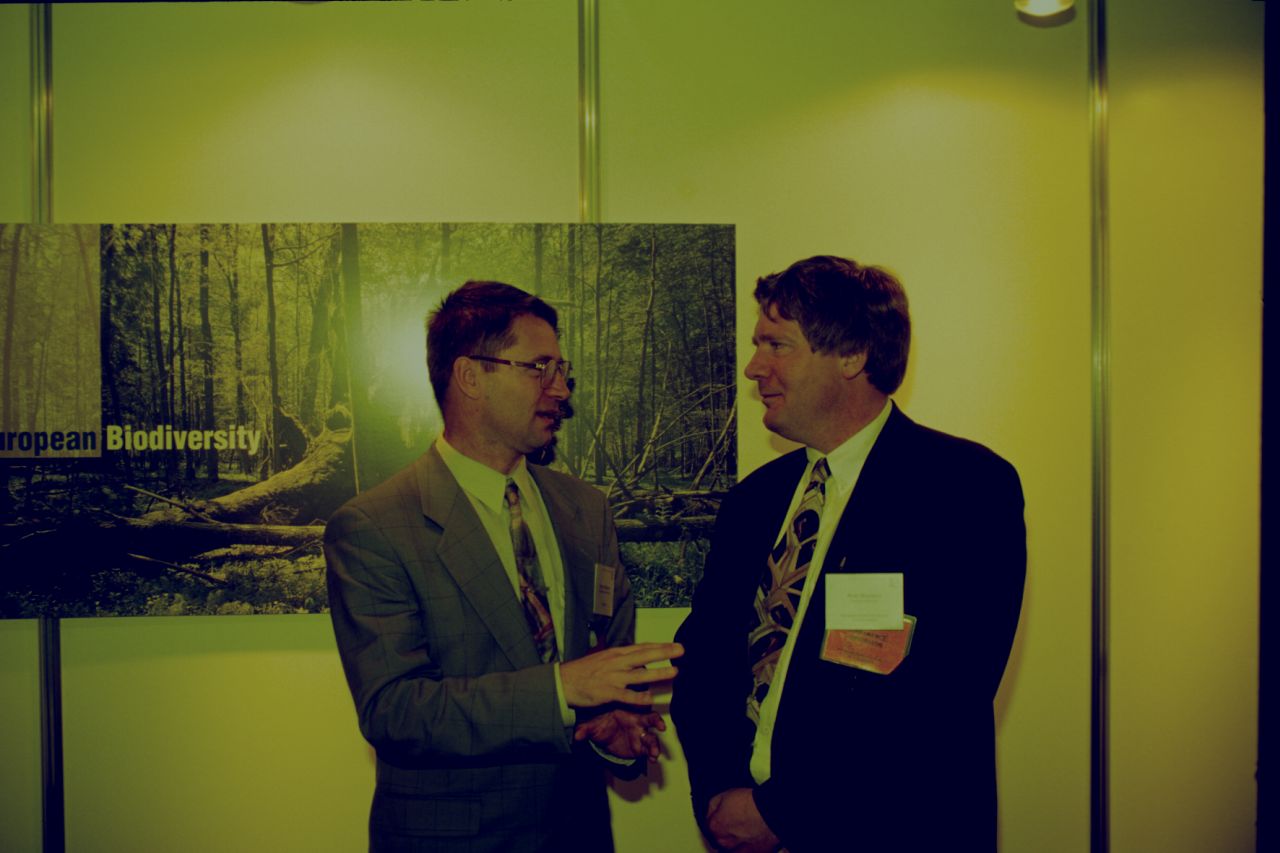Recently I received some pictures of the past from my former Slovenian government colleague Peter Skoberne, and those pictures brought back memories about the Pan-European Biological and Landscape Diversity Strategy (PEBLDS).
I was the first PEBLDS president, at that time employed at the Dutch Ministry of Agriculture, Nature Management & Fisheries. Peter Skoberne was one of the PEBLDS presidents succeeding me.
In 1994, the Pan-European Biological and Landscape Diversity Strategy (PEBLDS) was developed as a framework to promote regional cooperation and build capacity for the implementation of the Convention on Biological Diversity in pan-Europe, in particular the so called EECCA region[i], and provided biodiversity-related input to the Environment for Europe process. The principal aim of the Strategy was to ensure the sustainability of the natural environment with special emphasis on concerted pan-European actions.
It served as a coordinating and unifying framework in pan-Europe for strengthening and building on existing initiatives. In 2011, a new strategy, the Pan-European 2020 Strategy for Biodiversity was developed as the successor to PEBLDS. This Strategy refocused efforts to prevent further loss of biodiversity in the pan-European region.
The idea of PEBLDS resulted from the so called EECONET Conference, “Conserving Europe’s Natural Heritage – Towards a European Ecological Network”, organized by the Dutch government in November 1993. The conference resulted in the EECONET Declaration. Graham Bennett (at that time IEEP Arnhem) and I were in charge of the organization of the conference. The EECONET Declaration called for a Pan-European Biological Diversity Strategy. Based on a formal proposal of the Dutch government, the idea for a Pan-European Strategy was welcomed by the Council of Europe. It was elaborated by ECNC, commissioned by the Council of Europe, into a full strategy. The Strategy was presented to the “Environment for Europe Ministerial Process” and adopted in the Environment for Europe conference in Sofia, Bulgaria, in 1995.
The PEBLDS was first served by the Council of Europe as secretariat of the Strategy, but later on UNEP Europe and the Council of Europe joined forces in serving as PEBLDS secretariat.
PEBLDS substantially boosted the cooperation on nature, biodiversity and landscapes between all part of Pan-Europe, including East-Europe and West-Europe, and initiated, among others, the development of a Pan-European Ecological Network. The approach was for that time rather revolutionary and at national levels various countries in the Pan-European region established their national ecological networks (sometimes under different names). The basis of the Pan-European Ecological Network in the EU became the EU Habitat Directive, with its – also rather revolutionary – Nature 2000.
PEBLDS turned biodiversity into an issue of political relevance in the ‘Ministerial Environment for Europe’ – conferences. Until then, biodiversity was hardly dealt with in this political Pan-European European process.
I was privileged to co-chair the biodiversity session, together with the Norwegian Minister of Environment, in the 6th Environment for Europe conference that took place in October 2007 in Belgrade, Serbia. This conference resulted into new initiatives in the field of regions and biodiversity and also biodiversity financing.
One of the lasting memories of the Pan-European process is for me the spirit of trust and enthusiasm of everyone who worked towards implementing the PEBLDS goals, from all “corners of Europe”. This included colleagues as Peter Skoberne, but also people like: Peter Bos, Eladio Fernandez-Galiano, Hans Friederich, Frits Schlingeman, Ivonne Higuero, Robert Lamb, Graham Drucker, Thierry Lucas, Klara Hajdu, Andras Dementer, Jerry Harrison, Peter Herkenrath, Emine Isciel, Lawrence Jones-Walters, John Angel, Mira Mileva, Ana Kobašlić, Andras Krolopp, Els Martens, Aysegul Cil, Tone Solhaug, Anne Teller, Marina von Weissenberg, Gianluca Silverstrini, Veit Koester, Louise Lakos, Gerard van Dijk, Mart Külvik, Carlos Martin-Novella, and Ilona Jepsena. And various others who I may not name here, but who I have not forgotten.
While looking back on this period in time, I feel proud and happy to have been an active part of this Pan-European process, which allowed me to work on conserving Europe’s nature and landscapes, while meeting many nice and committed people and visiting many Pan-European countries. It brings back memories of an era of true European cooperation and spirit and of feeling co-responsible for each others nature and biodiversity.
I wish for the Pan-European region this kind of spirit in dealing with all common challenges and goals. Let’s never forget that we are all human first and foremost, with very similar needs, and that, whether we like it or not, we all depend on each other, and on nature.
Rob Wolters
1 January 2023
For more information on PEBLDS, see the full text: https://www.cbd.int/doc/nbsap/rbsap/peblds-rbsap.pdf
For more information on the Pan-European 2020 Strategy for Biodiversity, see file: ///E:/Data/Downloads/pan-european_2020_strategy_for_biodiversity.pdf
[i] EECCA = Eastern Europe, Caucasus and Central Asia, a block of countries that includes Armenia, Azerbaijan, Belarus, Georgia, Kazakhstan, Kyrgyzstan, Moldova, Russian Federation, Tajikistan, Turkmenistan, Ukraine and Uzbekistan.
On the picture: Peter Skoberne (left) & Rob Wolters (right)

